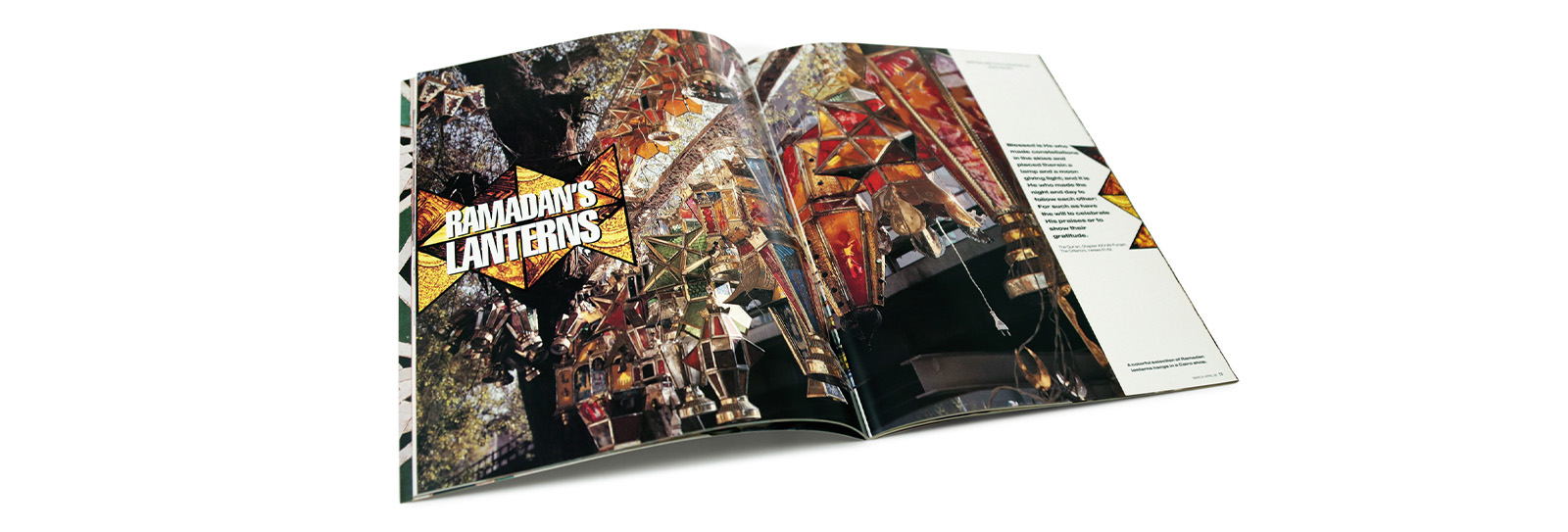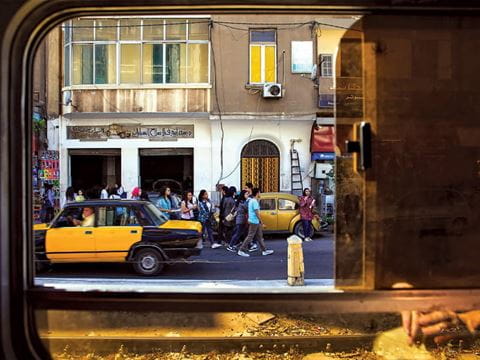
Find Ramadan Lanterns on Cairo's Streets with John Feeney
In the March/April 1992 issue, writer and photographer John Feeney took AramcoWorld readers on a walk through the streets of Cairo during Ramadan.
In the March/April 1992 issue, writer and photographer John Feeney took AramcoWorld readers on a walk through the streets of Cairo during Ramadan. There, they were illuminated with the cover story and tradition of “Ramadan’s Lanterns.” Feeney, a longtime contributor with close to 100 credit lines in AramcoWorld, spent more than 30 years in Egypt, sharing stories and educating readers across the globe.
Ramadan, the ninth month of the Hijri lunar calendar, marks a time for fasting, blessings and prayers. Muslims give thanks to God during this holy month, and within Arab countries, one can find lanterns and other decorations adorning homes throughout. Merchants in larger cities even get in on the festivities, bedecking storefronts with these Ramadan lanterns, or fawanees as they’re called in Arabic.
“One week before Ramadan begins,” writes Feeney in his 1992 story, “part of Ahmad Maher Street, for most of the year a humble thoroughfare in the old medieval quarter of Cairo, is transformed. Usually home to tinsmiths, marble-cutters and makers of mousetraps, for one glorious month it becomes ’The Street of the Lanterns.’”
Discover more about this story and more from our FirstLook section.
You may also be interested in...

Saudi Camel Festival by Norah AlAmri
Arts
This photo series began unexpectedly when I found that photographing people behind windows and maintaining a distance made me, and the people I photographed, feel more comfortable. I purposefully frame myself in the reflection of the window to see into the space I’m photographing. I feel every window tells a different story.
How to Discover Egypt From the Inside Out
Arts
Rather than just telling travelers where to go, the guidebook Egypt: Inside Out by Trevor Naylor offers an inside-out perspective that evokes the experience of being there, inviting readers to embrace an almost meditative travel discipline of slowing down to take in the details and complexities of Egypt, moment by moment.
FirstLook - A blistering triumph for the back-street boys
Arts
Amid the roar of racers zooming toward the finish line in London during the 1980 Grand Prix, longtime auto-racing photographer and renowned artist Michael Turner trained his lens on a Saudia-Williams FW 07.